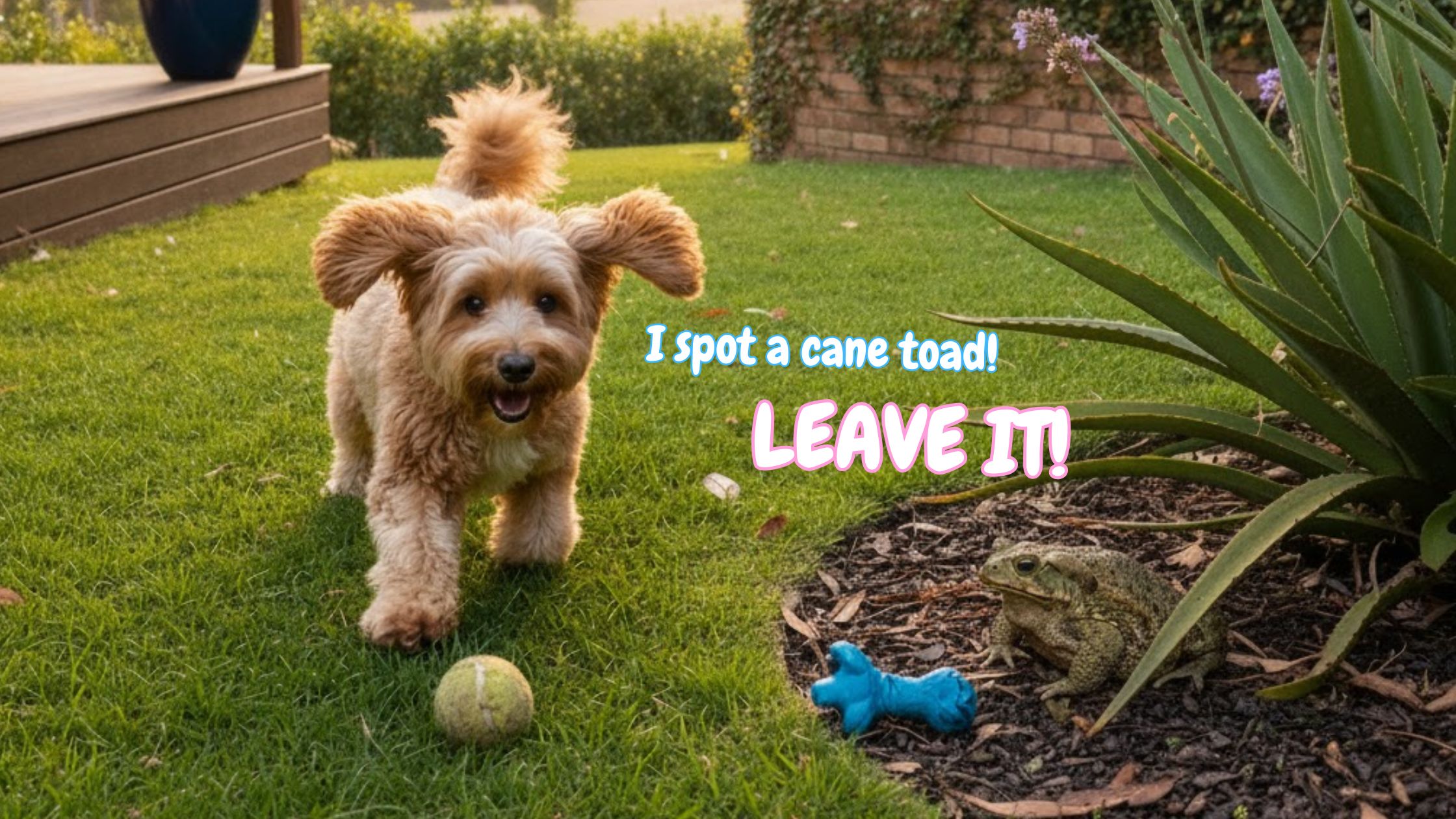
Cane Toad Season Is Here: What Every Dog Parent Needs to Know
If you’ve lived in Queensland for a while, you’ll know the familiar dread that comes with the humid nights of cane toad season. Those bumpy, toxic invaders love to lurk in lawns, water bowls, and garden corners, posing a serious threat to our curious pups.
At 3 Spoilt Dogs, we are super vigilant about cane toads and is actually one of the questions we ask during our Meet & Greet (as some dogs love to chase and catch them)
So here’s what you need to know to keep your dog safe, spot the signs early, and teach them to steer clear of these dangerous amphibians.
Why Cane Toads Are So Dangerous to Dogs
Cane toads secrete a potent toxin called bufotoxin from glands on their back and neck. When a dog bites, licks, or even mouths a toad, that toxin is absorbed through the gums and tongue and can act within minutes.
Even a small amount can be life-threatening, particularly for small breeds and puppies. Cane toads don’t need to be eaten to cause harm; simple contact is enough.
Symptoms of Cane Toad Poisoning
Toxin effects usually appear within minutes. Look out for:
- Excessive drooling or frothing at the mouth
- Bright red gums (sometimes turning pale or blue as poisoning progresses)
- Pawing at the mouth or face
- Vomiting
- Disorientation, shaking or wobbling
- Seizures or muscle twitching
- Panting or difficulty breathing
- Collapse or unresponsiveness
If you ever suspect toad exposure don’t wait. Every minute counts.
First Aid: What To Do Immediately
- Stay calm but act fast.
Move your dog away from the toad straight away and keep them calm and still. - Wipe their mouth thoroughly.
Using a clean, damp cloth, gently wipe the inside of the mouth, gums, and tongue to remove as much toxin as possible.- Keep wiping and replacing the cloth with a clean section each time.
- Do not rinse or pour water into your dog’s mouth, as this can cause them to inhale or swallow water and potentially drown.
- Call your vet right away.
Even if your dog seems okay, symptoms can escalate quickly. Contact your vet or an emergency animal hospital for immediate advice and treatment.
Pro tip: Save your emergency vet’s number in your phone and stick it on the fridge — you won’t have time to Google in a panic.
Training Your Dog to Avoid Cane Toads
Prevention is always better than cure. Here’s how to reduce curiosity around these toxic pests:
- Teach a Strong “Leave It” Command
Start indoors with treats or toys, using calm repetition and reward. Gradually move outdoors and use different objects until your dog understands that “leave it” means “walk away.”
- Use Controlled Exposure
If you live in a toad-heavy area, some trainers offer cane toad aversion training using safe scent cues or mock setups. This helps your dog recognise the smell and instinctively avoid it.
- Supervise Outdoor Time
Cane toads are most active at night, especially after rain. Avoid late-night unsupervised playtime, and always check your yard with a torch before letting your dog out.
- Make Your Yard Less Inviting
- Remove standing water and pet bowls from outdoors overnight.
- Keep grass short and garden beds tidy.
- Block access to hiding spots under decks, pots, or garden furniture.
- Turn off outdoor lights that attract insects (toads’ favourite dinner).
What We Do at 3 Spoilt Dogs
During toad season, we take extra precautions around the play yard and outdoor areas:
- Evening yard checks before bedtime
- Remove any toads that are in vicinity
- No outdoor water bowls
- Supervision during evening poop & pee time
- Trained in emergency first aid for toad exposure
We love our Spoilt Guests like our own and keeping them safe is always our top priority.
Cane toads might be an unavoidable part of life in Queensland, but with a bit of vigilance and training, you can protect your pup from serious harm.
If your dog shows any symptoms after toad exposure get them to a vet immediately. Quick action saves lives.
Stay safe this toad season, keep those yards tidy, and remember: when in doubt, “Leave it!” is your dog’s best friend.